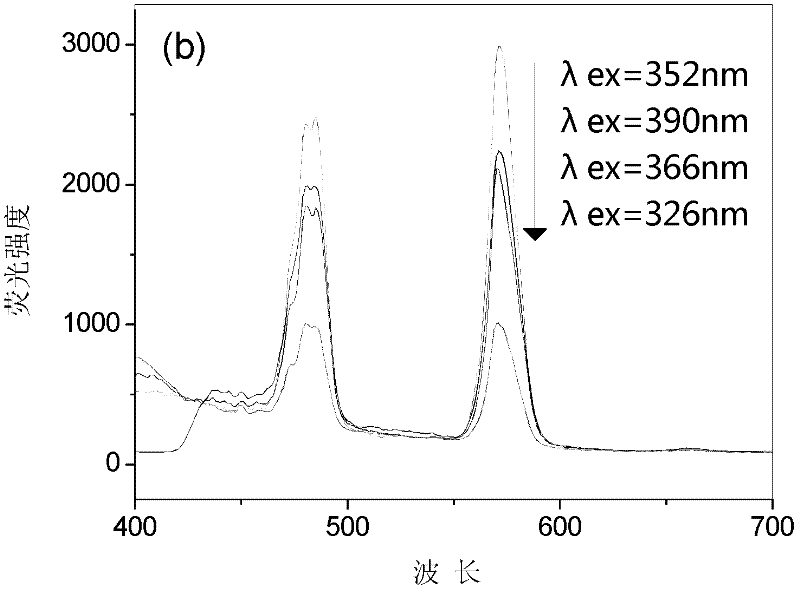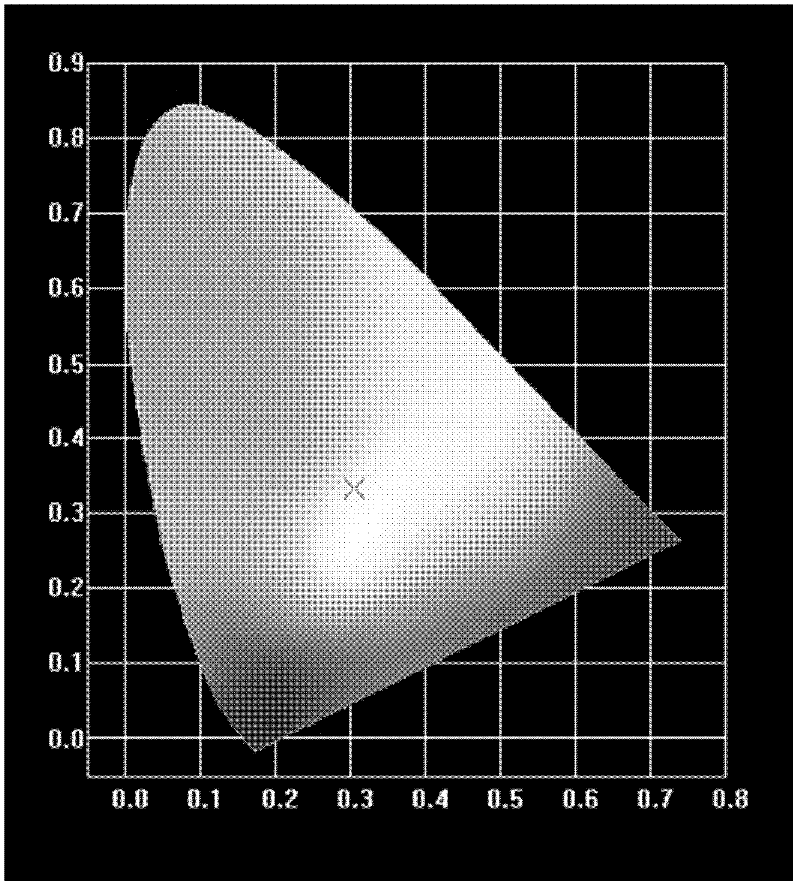Low-temperature co-fired ceramic material emitting white light and preparation method thereof
A technology of low-temperature co-fired ceramics and white light, which is applied in the field of white-light-emitting low-temperature co-fired ceramic materials and their preparation, to achieve high luminous intensity, low sintering temperature, and good uniformity
- Summary
- Abstract
- Description
- Claims
- Application Information
AI Technical Summary
Problems solved by technology
Method used
Image
Examples
Embodiment 1
[0027] Embodiment 1 will account for the CaCO of mol percent 11% 3 , 9% by mole of Dy 3+ The corresponding amount of Dy 2 o 3 Soluble in HNO 3 make nitrate solution 3 Then add 25% B in mole percent 2 o 3 The corresponding amount of H 3 BO 3 The solution was mixed to prepare an inorganic solution, accounting for 55% Si(OC 2 h 5 ) 4 dissolved in anhydrous C 2 h 5 Prepare an organic solution in OH. Slowly pour the inorganic solution into the organic solution, wherein the volume ratio of the inorganic solution to the organic solution is 2:1. The mixed solution was stirred in a water bath at 80° C. for 1 hour to obtain a gel. The gel was heated in an oven at 80° C. for 8 hours to obtain a dry gel, and then placed in a high-temperature furnace for pre-calcination at 550° C. for 3 hours. Put the gel powder obtained after pre-burning into a ball mill jar, add absolute ethanol, ball mill for 4 hours and then dry. 10wt%-PVA solution was added to the obtained powder, and ...
Embodiment 2
[0031] Will be 20% by mole %CaCO 3 , Dy at 1% by mole 3+ The corresponding amount of Dy 2 o 3 Soluble in HNO 3 Prepare nitrate solution, and account for mole percentage 29%B 2 o 3 The corresponding amount of H 3 BO 3 The solution is mixed to prepare an inorganic solution, accounting for 50% Si(OC 2 h 5 ) 4 Soluble in anhydrous C 2 h 5 Prepare an organic solution in OH.
[0032] The inorganic solution was slowly poured into the organic solution, wherein the volume ratio of the inorganic solution to the organic solution was 2:1, and the mixed solution was stirred in a water bath at 80° C. for 2 hours to obtain a gel.
[0033] The gel was heated in an oven at 100°C for 6 hours to obtain a dry gel, and then placed in a high-temperature furnace for pre-calcination at 600°C for 2 hours.
[0034] The gel powder obtained after the pre-burning is completed is put into a ball mill jar, and absolute ethanol is added, ball milled for 2 hours and then dried.
[...
Embodiment 3
[0038] Will account for 15% by mole of CaCO 3 3% by mole Dy(NO 3 ) 3 Soluble in HNO 3 The prepared nitrate solution and accounted for 22% by mole of B 2 o 3 The corresponding amount of H 3 BO 3 The solution is mixed to prepare an inorganic solution, accounting for 60% Si(OC 2 h 5 ) 4 dissolved in anhydrous C 2 h 5 Prepare an organic solution in OH.
[0039] The inorganic solution was slowly poured into the organic solution, wherein the volume ratio of the inorganic solution to the organic solution was 2:1, and the mixed solution was stirred in a water bath at 100° C. for 1.5 hours to obtain a gel.
[0040] The gel was heated in an oven at 100° C. for 3 hours to obtain a dry gel, and then placed in a high-temperature furnace for pre-calcination at 500° C. for 4 hours.
[0041] The gel powder obtained after the pre-burning is completed is put into a ball mill jar, and absolute ethanol is added, ball milled for 6 hours and then dried.
[0042] 10w...
PUM
 Login to View More
Login to View More Abstract
Description
Claims
Application Information
 Login to View More
Login to View More - R&D
- Intellectual Property
- Life Sciences
- Materials
- Tech Scout
- Unparalleled Data Quality
- Higher Quality Content
- 60% Fewer Hallucinations
Browse by: Latest US Patents, China's latest patents, Technical Efficacy Thesaurus, Application Domain, Technology Topic, Popular Technical Reports.
© 2025 PatSnap. All rights reserved.Legal|Privacy policy|Modern Slavery Act Transparency Statement|Sitemap|About US| Contact US: help@patsnap.com



